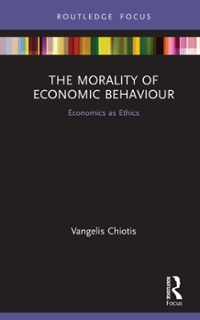Question
A life insurance company wishes to examine the relationship between the amount of life insurance held by a family and family income.From a random sample
A life insurance company wishes to examine the relationship between the amount of life insurance held by a family and family income.From a random sample of 18 households, the company collected the data shown below.The data are in units of thousands of dollars.
Let y = INSUR x = INCOME INSUR INCOME
X Y
78 23
132 32
166 33
123 32
162 41
130 34
204 49
346 86
358 85
171 42
308 87
596 142
97 25
204 58
225 55
384 99
246 63
167 37
1 The numerator of the slope coefficient formula for the estimated regression equation is: a 72,973.79 b 71,542.93 c 70,140.13 d 68,764.83
2 The denominator of the slope coefficient formula for the estimated regression equation is: a 17,034.50 b 16,458.45 c 15,901.88 d 15,364.14
3 The vertical intercept of the estimated regression equation is
a -2.398 b -2.086 c -1.814 d -1.577
4 The estimated regression equation predicts that for each additional $1,000 income life insurance policy will rise by _______ ($1,000)
a 6.976 b 5.813 c 4.844 d 4.037
5 The income of one policy holder is 63 ($1000).The predicted life insurance policy is _______ ($1,000)
a 267.655 b 252.505 c 238.212 d 224.728
6 The observed policy amount for the policy holder in previous question is 246 ($1,000) The prediction error is _______.
a -6.505 b -5.995 c -5.525 d -5.093
7 The sum of squared errors (SSE) is,
a 5885.7 b 5552.5 c 5238.2 d 4941.7
8 The sum of squared total (SST) is,
a 306246.7 b 294468.0 c 283142.3 d 272252.2
9 The sum of squared explained deviations (SSR) is,
a 288693.3 b 277589.7 c 266913.2 d 256647.3
10 The observed insurance policy deviates from the predicted policy, on average, by _______ ($1,000) a 18.629 b 17.658 c 16.737 d 15.865
11 The sample data provides that ______ fraction of variations in the life insurance policy is explained by income.
a 0.8674 b 0.9035 c 0.9412 d 0.9804
12 For the purpose of statistical inference for the slope parameter, the standard error of the slope coefficient, se(b), is
a 0.1727 b 0.1570 c 0.1427 d 0.1298
13 The t-score to find the margin of error for a 95% interval estimate of the population slope parameter is,
a 2.226 b 2.120 c 2.019 d 1.923
14 The margin of error for a 95% confidence interval for the population slope parameter is _______ ($1,000),
a 0.303 b 0.288 c 0.274 d 0.261
15 To perform a test of hypothesis that the population slope parameter is zero, the test statistic t is ______.
a 30.005 b 29.131 c 28.282 d 27.459
DEPENDENT VARIABLE = WAGE
Regression Statistics
Multiple R 0.3859
R Square
Adjusted R Square 0.131
Standard Error
Observations 50
DF
Regression: 1
Error:
Total: 49
SS:
Regression:
Error: 6416.6541
Total: 7539.1773
MS:
Regression: 1122.5231
Error:
Fstat:
Regression: 8.3970726
Pvalue:
Regression: 0.00565
b_j se(b_j) t Stat P-value Lower 95% Upper 95%
Intercept: 1.7528 6.4752 0.2707 0.7878 -11.2666 14.7721
EDUC 1.3429 2.89777
16 The predicted WAGE when EDUC = 16 is, a $26.14 b $25.14 c $24.17 d $23.24
17 The fraction of the variations in WAGE explained by EDUC is ________.
a 0.2918 b 0.2084 c 0.1489 d 0.1064
18 Given that the sum of the squared deviations of EDUC is 622.48 The standard error of the slope coefficient is ________.
a 0.4634 b 0.3862 c 0.3218 d 0.2682
19 We are 95% confident that the population slope parameter is between,
a 0.49 2.36 b 0.41 2.27 c 0.34 2.21 d 0.29 2.15
20 The value of the test statistic for H: = 0 is,
a 4.761 b 4.035 c 3.419 d 2.898
Step by Step Solution
There are 3 Steps involved in it
Step: 1

Get Instant Access to Expert-Tailored Solutions
See step-by-step solutions with expert insights and AI powered tools for academic success
Step: 2

Step: 3

Ace Your Homework with AI
Get the answers you need in no time with our AI-driven, step-by-step assistance
Get Started


